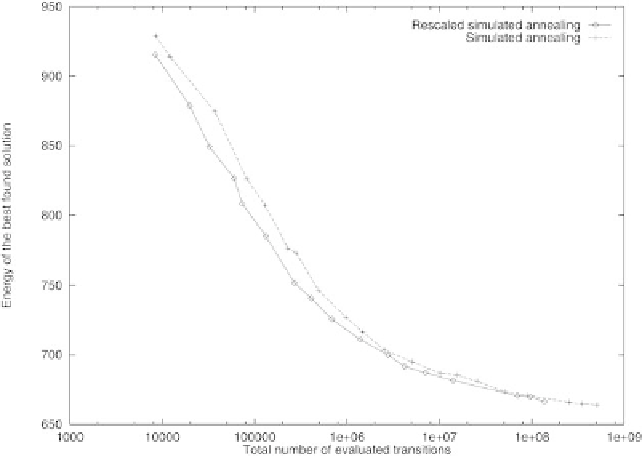Information Technology Reference
In-Depth Information
Fig. 8.7.
Comparison of the performances of the standard and rescaled simulated
annealing as a function of the total number of transitions tested by the algorithm.
Each value on the curves is computed over 100 runs of the algorithms
up the convergence. Figure 8.7 compares the average quality of the solutions
obtained with simulated annealing and with microcanonical annealing, as a
function of the total number of tested transitions. As expected, the smaller
the allotted resolution time, the larger the gain in terms of performance.
8.6 Neural Approaches
At the beginning of the 1980s, recurrent neural networks (defined in Chaps. 2
and 4) were shown to be able to solve optimisation problems. For that purpose,
they have two major advantages: first, neural algorithms often solve very ef-
ficiently some optimisation problems; in addition, neural algorithms can give
rise to high-speed numerical, analog, and even optical electronic implementa-
tions, taking advantage of parallelism.
As compared to other metaheuristics, recurrent neural networks are par-
ticularly well suited to problems that require extremely short response times,
and possibly a hardware implementation.
8.6.1 Formal Neural Networks for Optimization
In recurrent neural networks used in optimization, neurons are either binary
(their activation function is a hard limiter between
−
1 and +1), or with a

Search WWH ::

Custom Search